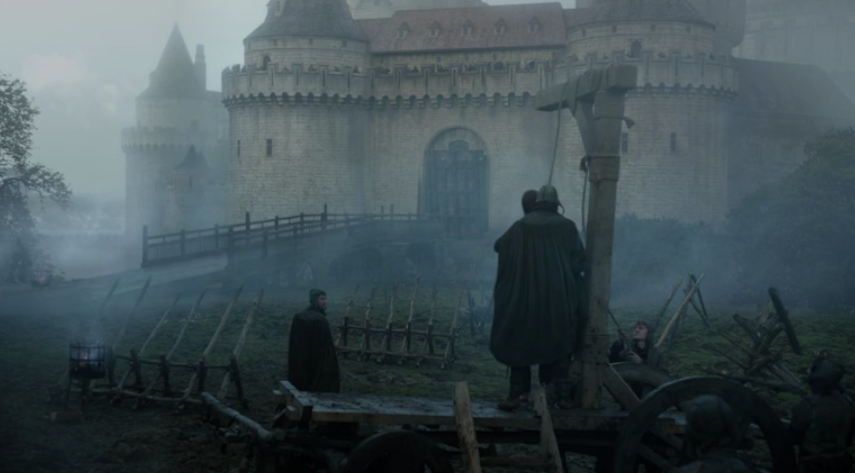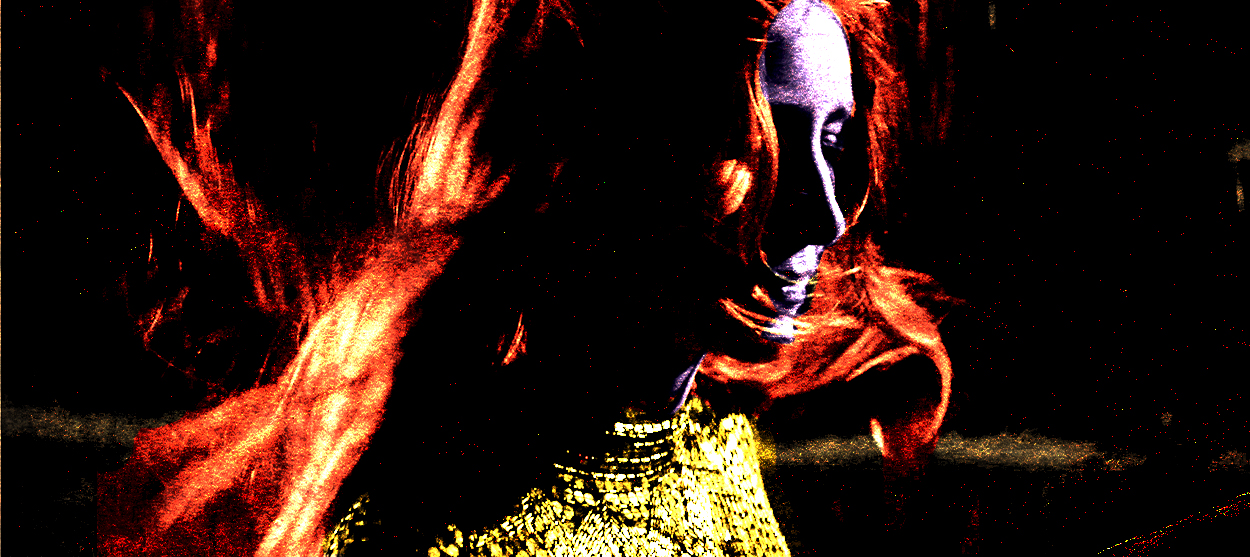I'm obsessed with Game of Thrones' weather
The things it does for clouds


Game of Thrones fans had one major complaint after Sunday night's epic Battle of Winterfell: They couldn't see anything. What people sitting on their couches at home seemed to forget, though, is that the conditions were just as frustrating for the army of the living, whose visibility was also hampered by that White Walker-induced blizzard. Hey, you know what they say about the weather: When it rains, it pours.
Or does it? Television shows, many of which are shot on back lots and sound stages, frequently forget (or can't afford) to pay attention to details like the weather. When meteorological conditions are a factor, they tend to be for a specific dramatic or narrative effect: say, a hurricane materializes at the most inopportune time to threaten an aircraft carrier, or the classic trope of rain at a funeral. Much rarer is it to find a show that pays as much attention to its weather as Game of Thrones, and for the sole purpose of establishing verisimilitude.

It makes perfect sense that Thrones would be more attuned to the everyday weather of its world than, say, a sitcom like Seinfeld or even a fellow fantastical high-budget drama like Westworld. The richly imagined continent of Westeros is part of the entire draw of the show, to the point that its map is the first thing we see every episode in the opening credits. Since the pilot, we've known that what sets Game of Thrones' universe apart from ours is that the seasons can last years, and that the events of the show take place at the end of a decades-long summer. In season seven, after winter "arrives," cold weather becomes even more frequent, an ever-present reminder that no matter the squabbles between houses, the coming season is the real danger.
The Week
Escape your echo chamber. Get the facts behind the news, plus analysis from multiple perspectives.

Sign up for The Week's Free Newsletters
From our morning news briefing to a weekly Good News Newsletter, get the best of The Week delivered directly to your inbox.
From our morning news briefing to a weekly Good News Newsletter, get the best of The Week delivered directly to your inbox.
But long before winter arrived and the White Walkers' magical blizzards became a major factor in the show, the weather was still a primary consideration for the showrunners. While of course the climate in the North would be different from the climate in Dorne, at the southernmost tip of Westeros, what is even smarter is how the weather at these particular locations manifests. Most of the time we see this in establishing shots, like this one from Arya's arrival in Braavos, in which a storm is stirring in the upper righthand corner, while skies remain clear in the upper left:

The dark clouds don't serve a particular narrative purpose, other than to show that Arya's arrival in the east is a bit damp. Later in the same episode, she is caught in the rain, a faithful follow-through on that pre-established storm cloud.
The cleverest part about the weather, though, is that it's not regionally static. Check out this scene in Braavos a few episodes later:

The weather changes between episodes for ostensibly "no reason." Of course, these decisions do have a purpose: to establish the sense that Game of Thrones takes place in a real world with random weather, just like ours. There are many other such examples of good days and bad days in Westeros, like these dramatically different forecasts in Pyke:
A free daily email with the biggest news stories of the day – and the best features from TheWeek.com


Part of why Game of Thrones' weather is so effective and essential as a world-building tool is because the realm's different kingdoms are roughly equivalent to regional climates on Earth. While the Westerosi lands might otherwise look unfamiliar, their weather is recognizable and grounding. The eastern continent of Essos might call to mind North Africa with its arid, hot climate. Dorne might remind you of Spain or Portugal, warm but with enough rain to maintain lush gardens. The Iron Islands, with their sea mist, could be comparable to Vancouver Island in Canada. Such associations make the world realer to an audience watching in climate-controlled living rooms, and it becomes easier to imagine how good the sun must feel coming through the curtains at King's Landing, or the damp bone-deep chill you would get during a visit to Moat Cailin.

The natural weather also stems from Game of Thrones actually shooting on location, with all the vexations and serendipitous conditions that entails. Ahead of the show's seventh season, for example, the showrunners admitted they considered delaying the premiere because they weren't getting the weather they wanted for their shoots: "[S]unny weather doesn't serve our purposes anymore, so we pushed back everything down the line to get some grim, gray weather, even in the sunnier places that we shoot," one of the creators told UFC Unfiltered. Daenerys' attack on the Lannister army in season seven's "Spoils of War" was also carefully calibrated with the spotty weather on location in Spain, with cinematographer Robert McLachlan telling The Verge he wanted to capture "the sun poking through haze" the way it might during a forest fire in British Columbia or California:

Shooting on location, particularly in Northern Ireland, also leads to lots of overcast days on the show. That gloom does double-duty in creating a moody and ominous atmosphere for the show that fits perfectly:



The most dramatic weather we've seen yet, though, was almost certainly the white-out during the Battle of Winterfell. When shooting the episode, the conditions were so "unprecedentedly brutal" and cold that one of the actors reportedly fainted on the set. And while this scene wasn't actually shot during a blizzard, it was inspired by the real-world frustrations with fighting — and flying — during a storm. "The weather effects played a massive role in all of this that would've been very had to plan for [if you were Daenerys or Jon Snow]," Mick Cook, an Australian combat veteran, told Vox. "The close-air support that dragons provide is not an all-weather option. The same thing that affected those dragons affects jets in the real world." Even when the weather is literally magical, there is a rooting in something realistic.


Still, Game of Thrones can sometimes cut corners due to the difficulty of getting the atmosphere to behave exactly how you want when you're on location. While winter is supposed to be tightening its hold on Westeros, for example, it seems like it never snows anywhere more than a few inches at a time. In our brief glimpse this season of King's Landing (shot on location in the decidedly unsnowy Croatian city of Dubrovnik), the capital still appeared mostly untouched by winter. Nan's stories assert that snow can fall "a hundred feet deep" in winter, so we are still clearly seeing only the earliest stages of the realm's most dreaded season.
But even if Game of Throne doesn't leap far enough ahead in time these next several episodes to show us mountainous drifts in Winterfell or winter's winds blowing snow through Dorne and Essos, the past eight seasons have done more than enough to contribute to the show's legacy of realistic weather. Neither snow nor rain nor heat nor gloom of night has been neglected by the showrunners, and Game of Thrones is all the richer for it.
Jeva Lange was the executive editor at TheWeek.com. She formerly served as The Week's deputy editor and culture critic. She is also a contributor to Screen Slate, and her writing has appeared in The New York Daily News, The Awl, Vice, and Gothamist, among other publications. Jeva lives in New York City. Follow her on Twitter.
-
 Political cartoons for December 14
Political cartoons for December 14Cartoons Sunday's political cartoons include a new White House flag, Venezuela negotiations, and more
-
 Heavenly spectacle in the wilds of Canada
Heavenly spectacle in the wilds of CanadaThe Week Recommends ‘Mind-bending’ outpost for spotting animals – and the northern lights
-
 Facial recognition: a revolution in policing
Facial recognition: a revolution in policingTalking Point All 43 police forces in England and Wales are set to be granted access, with those against calling for increasing safeguards on the technology
-
 Walter Isaacson's 'Elon Musk' can 'scarcely contain its subject'
Walter Isaacson's 'Elon Musk' can 'scarcely contain its subject'The latest biography on the elusive tech mogul is causing a stir among critics
-
 Welcome to the new TheWeek.com!
Welcome to the new TheWeek.com!The Explainer Please allow us to reintroduce ourselves
-
 The Oscars finale was a heartless disaster
The Oscars finale was a heartless disasterThe Explainer A calculated attempt at emotional manipulation goes very wrong
-
 Most awkward awards show ever?
Most awkward awards show ever?The Explainer The best, worst, and most shocking moments from a chaotic Golden Globes
-
 The possible silver lining to the Warner Bros. deal
The possible silver lining to the Warner Bros. dealThe Explainer Could what's terrible for theaters be good for creators?
-
 Jeffrey Wright is the new 'narrator voice'
Jeffrey Wright is the new 'narrator voice'The Explainer Move over, Sam Elliott and Morgan Freeman
-
 This week's literary events are the biggest award shows of 2020
This week's literary events are the biggest award shows of 2020feature So long, Oscar. Hello, Booker.
-
 What She Dies Tomorrow can teach us about our unshakable obsession with mortality
What She Dies Tomorrow can teach us about our unshakable obsession with mortalityThe Explainer This film isn't about the pandemic. But it can help viewers confront their fears about death.
